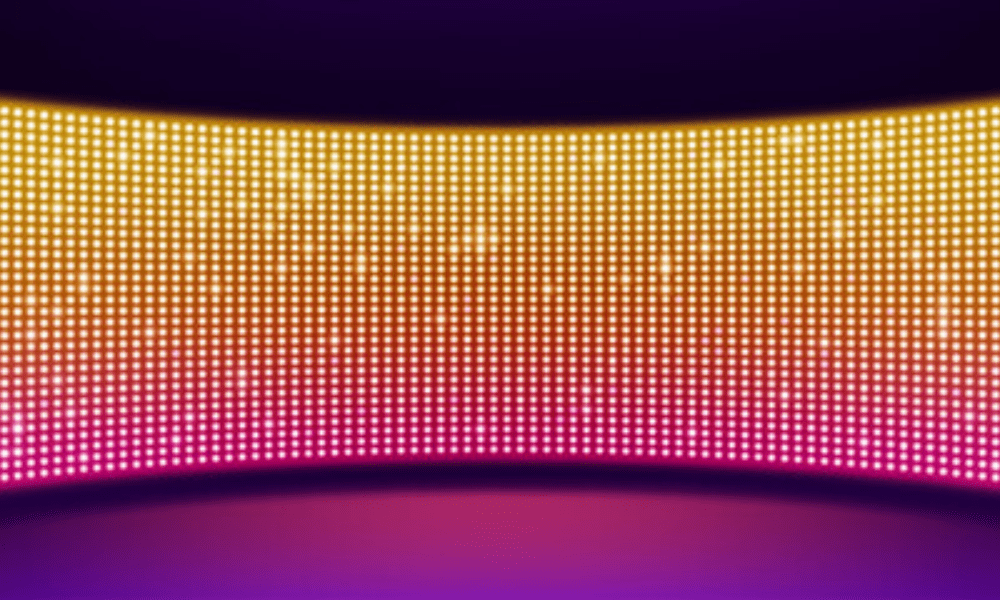, white , or colored dots that are ruining your viewing experience? These could be dead or stuck pixels , defects that can affect the quality and lifespan of your screen. Fortunately, there are solutions to repair or prevent them.
In this article, we will explain what dead or stuck pixels are, how to detect them, and how to fix them.
What is a dead or stuck pixel on a PC screen?
A pixel is a component of the image displayed on your PC screen . Each pixel is made up of three sub-pixels of red, green, and blue, which light up or turn off to produce a particular shade . A PC screen can contain millions of pixels , which are controlled by an electronic circuit board .
A dead or stuck pixel is a pixel that is not functioning correctly. It can be:
- Dead : it does not light up at all, regardless of the signal sent by the electronic board. It appears as a black dot on the screen.
- Stuck : it remains permanently lit , regardless of the signal sent by the electronic board. It appears as a white or colored dot on the screen.
- Hot : it remains permanently lit with a fixed color , regardless of the signal sent by the electronic board. It appears as a red, green, or blue dot on the screen.

Dead or stuck pixels are usually due to manufacturing defects or damage caused by shocks , scratches , power surges , or prolonged screen use .
What are the causes and consequences of defective pixels?
Possible factors include:
- Screen quality : some screens are more prone to defective pixels than others, depending on the technology used (LCD, LED, OLED, etc.), the manufacturing process and the manufacturer's quality control.
- Transport and storage : the screen can be subjected to shocks, vibrations, temperature or humidity variations which can damage the pixels or connectors.
- Installation and connection : The screen may be improperly installed, fixed or connected, which can cause short circuits or electromagnetic interference that can affect the pixels.
- Use and maintenance : The screen can be exposed to sources of heat, light, or dust that can damage the pixels. It can also be cleaned with unsuitable or overly aggressive products that can scratch or corrode the pixels.
The consequences of dead or stuck pixels depend on the number, size, and position of the defective pixels. They can be:
- Negligible : if the defective pixels are few in number, small and located in the corners or edges of the screen, they may go unnoticed or not interfere with vision.
- Annoying : if the defective pixels are more numerous, larger or located in the center of the screen, they can disrupt reading, viewing or gaming.
- Unacceptable : if the defective pixels are too numerous, too large or too visible, they can make the screen unusable or unsightly.

How to detect dead or stuck pixels on your screen
To detect dead or stuck pixels on your PC screen, there are several methods:
- The visual method : this involves carefully observing your screen while it displays different colors (black, white, red, green, blue) to identify pixels that do not change color or that remain off. You can use websites or software that offer pixel tests, such as Dead Pixel Test or Dead Pixel Locator.
- The touch method : this involves running your finger across the screen, applying light pressure to feel for pixels that are depressed or resist. This method is not recommended as it can damage the screen or leave fingerprints.
- The photographic method : this involves taking a picture of your screen with a digital camera or smartphone in macro mode and at high resolution, then zooming in on the photo to identify defective pixels. This method is not very reliable because it can be affected by the camera's quality, the brightness setting, or light reflections.
This article might interest you : PC screen that turns off and on again: how to solve this problem?
How to fix dead or stuck pixels on a PC screen
If you've noticed dead or stuck pixels on your PC screen, don't panic. There are solutions to repair or minimize them. However, be aware that these solutions aren't guaranteed to work perfectly and may pose risks to your screen. Therefore, it's advisable to use them with caution and at your own risk.
The manual method: apply pressure to the defective pixel
This method involves trying to reactivate the defective pixel by applying pressure to it with a pointed but not sharp object, such as a pen, eraser, or cotton swab. Here are the steps to follow:
- Turn off your PC monitor and unplug it from the electrical outlet.
- Place a piece of paper or fabric over the defective pixel to avoid scratching the screen.
- Take the pointed object and press gently but firmly on the defective pixel for a few seconds.
- Release the pressure and turn your PC screen back on .
- Check if the defective pixel has disappeared or changed color. If not, repeat the operation several times, increasing the pressure and duration.
This method may work for stuck or hot pixels, but not for dead pixels. It can also damage the screen if the pressure is too strong or too long.
The software method: using a pixel repair tool
This method involves using a pixel repair tool , which is a website or software program that displays bright, changing colors on the PC screen in order to stimulate the defective pixel and restore it to normal. Here are some examples of pixel repair tools:
- JScreenFix : an effective and free online tool that displays a blinking area you can move over the defective pixel. Simply let the tool run for about 10 minutes to attempt to repair the pixel.
- Pixel Réa : a portable Windows that displays a colorful window you can resize and position over the defective pixel. Simply click the " Repair " button and let the application run for approximately 15 minutes to attempt to repair the pixel.
- Filehorse Pixel Repair : a Windows software that detects and repairs stuck pixels. Simply launch the software, choose the " Detect " or " Repair " mode, and follow the on-screen instructions.
- Aurelitec PixelHealer : a Windows software that corrects dead, stuck, or hot pixels. Simply launch the software, select the size and color of the area to be treated, and place it over the defective pixel. Then click the " Start Flashing " button and let the software run for about an hour to attempt to repair the pixel.
- Dead Pixel Buddy : a Windows application that locates and eliminates dead pixels. Simply launch the application, choose a background color, and move your mouse over the screen to locate the dead pixels. Then click the " Fix " button and let the application run for a few minutes to attempt to repair the pixels.
This method may work for stuck or hot pixels, but not for dead pixels. It may also cause headaches or seizures in some people sensitive to flashing lights.
The hardware method: replace the screen or call in a professional
This method involves replacing the PC screen or entrusting it to a professional who can repair or replace it. It is the safest and most effective method, but also the most expensive and complex.
You can also check your PC monitor's warranty, as some manufacturers offer a warranty against defective pixels. Contact the manufacturer's customer service to request a free replacement or repair of your monitor.
Replace or repair your PC screen :
- If you are replacing your PC monitor yourself , you will need to buy a new monitor that is compatible with your computer and install it correctly.
- If you entrust your screen to a professional , they will repair or replace it depending on their diagnosis. In any case, ask for an invoice and a warranty for your new screen.
FAQs
How to prevent dead or stuck pixels from appearing on your PC screen?
To avoid having to repair dead or stuck pixels on your PC screen, it is best to prevent their appearance by adopting some good practices.

Here are some tips for taking care of your PC screen:
- Choose a quality monitor and check the manufacturer's warranty : before buying a PC monitor, research its quality and reliability by consulting user reviews or expert tests. Also, check the manufacturer's warranty against defective pixels, which can vary depending on the brand and model.
- Protecting your screen from bumps and scratches : During transport, storage, or use, avoid subjecting your PC monitor to shocks, vibrations, pressure, or friction that can damage pixels or connectors. Use a case or screen protector to shield your screen from scratches and dust.
- Avoid leaving your screen on for too long or displaying static images : when you're not using your PC monitor, turn it off or put it in sleep mode to prevent overheating or strain. Also, avoid displaying static images for extended periods, as this can cause image retention or burn-in on your screen.
- Use a screen saver or activate sleep mode : If you need to leave your PC screen on for an extended period, use a screen saver or activate your computer's sleep mode to regularly change the image displayed on your screen and avoid stuck pixels.
- Clean your screen regularly with a soft, damp cloth : to remove dust, fingerprints or stains that can accumulate on your PC screen, clean it regularly with a soft, damp cloth, without using chemicals or abrasives that can scratch or corrode the pixels.
Read also : Should you opt for a VA panel for a PC monitor?
What is the zero dead pixel guarantee?
The zero dead pixel guarantee is a warranty offered by some PC monitor manufacturers, who commit to replacing or repairing the monitor free of charge if it has at least one dead pixel upon delivery. This guarantee may be limited in time or subject to specific conditions.


